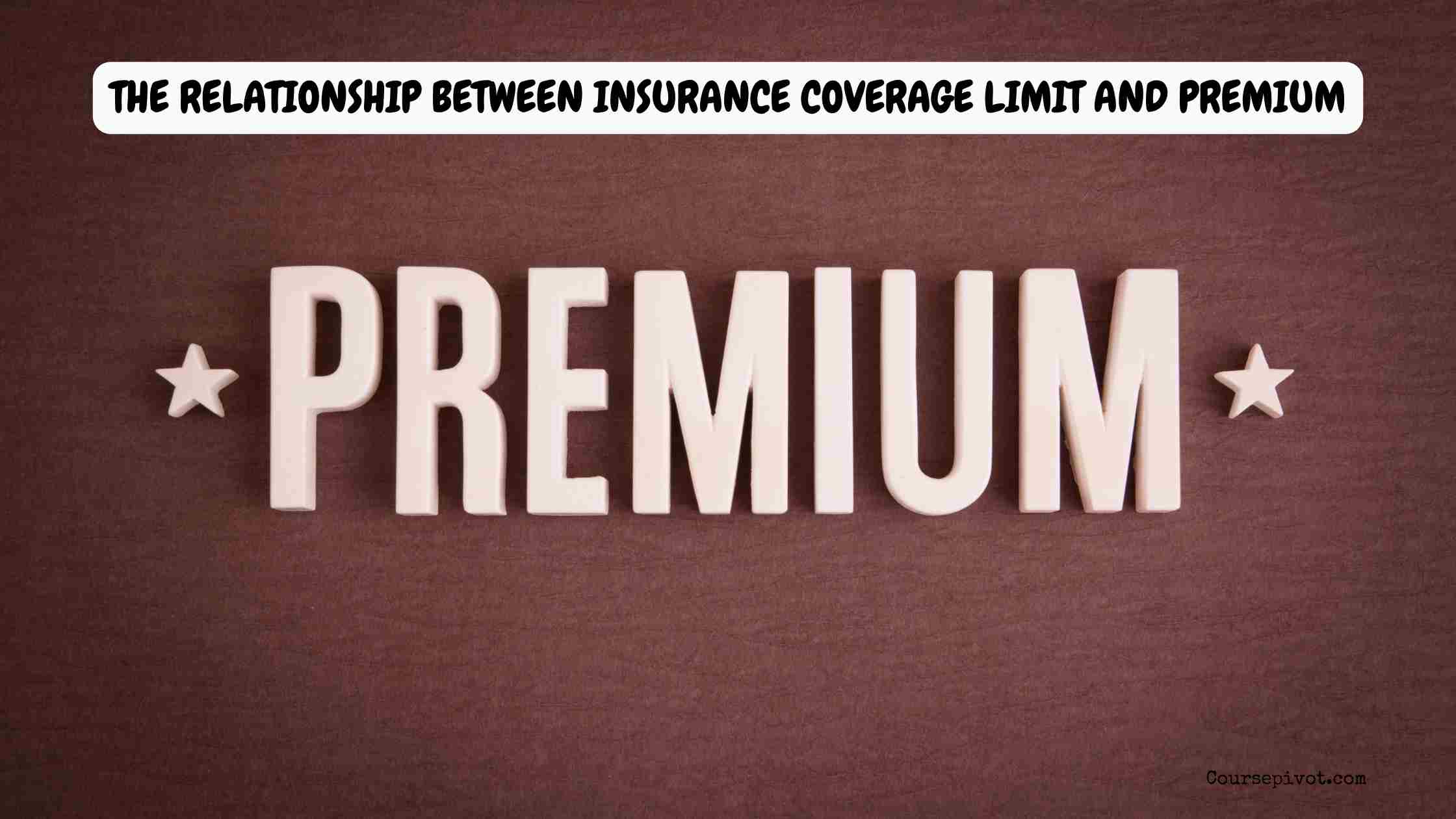
The Relationship Between Insurance Coverage Limit and Premium
Have you ever wondered why some insurance policies cost more than others, even for the same type of coverage? I’ve puzzled over my own insurance bills, noticing how the details of a policy can drastically change the price. When it comes to insurance, the relationship between coverage limit and premium is a key factor. In this blog, I’ll make an assumption about this relationship and explain my thinking behind it, shedding light on how insurance pricing works.
Table of Contents
Insurance premiums and coverage limits are closely tied, affecting how much you pay and how much protection you get. This matters because choosing the right coverage can safeguard your finances without breaking the bank. I’ve learned to weigh these factors carefully when picking policies. Let’s dive into my assumption and the logic behind it.
Why should you care? Because understanding this relationship can help you make smarter insurance decisions. This article will state my assumption, break down the reasoning, and explore its implications. Ready to unravel the connection between coverage limits and premiums? Let’s get started.
My Assumption
I assume that higher coverage limits in an insurance policy lead to higher premiums, meaning the more protection you opt for, the more you’ll pay for the policy.
Explaining My Thinking
This assumption is based on the fundamental principles of insurance and risk management, as well as practical observations. Here’s the reasoning behind why higher coverage limits typically result in higher premiums:
Increased Risk for the Insurer
Coverage limits represent the maximum amount an insurer will pay for a covered claim. Higher limits mean the insurer takes on greater financial risk:
- Larger Payouts: A $500,000 liability limit in auto insurance could mean a $500,000 payout if you’re at fault in a serious accident, compared to just $100,000 for a lower limit.
- Higher Exposure: Insurers must reserve more funds to cover potential claims, increasing their liability.
- Probability of Claims: While higher limits don’t increase the likelihood of an incident, they amplify the cost when claims occur.
For example, a homeowners policy with a $1 million dwelling coverage costs more than one with $300,000 because the insurer faces a bigger potential loss. I’ve noticed this pattern when comparing quotes—more coverage always bumps up the price.
Actuarial Pricing Models
Insurers use actuarial data to set premiums based on risk:
- Statistical Risk: Higher limits correlate with larger potential claims, which actuaries factor into pricing models.
- Loss Experience: Data shows that claims under high-limit policies tend to be costlier, justifying higher premiums.
- Reinsurance Costs: Insurers buy reinsurance to cover large claims, and higher coverage limits increase these costs, passed on to you.
I find it fascinating how math drives insurance pricing. It’s not arbitrary—every dollar of coverage is calculated.
Market and Regulatory Factors
The insurance market and regulations also support this relationship:
- Competitive Pricing: Insurers compete, but higher limits consistently cost more across providers due to shared risk models. For instance, a 5-year CD with a 4.5% rate costs more to offer than a 1-year CD at 3%.
- State Requirements: Some states mandate minimum coverage (e.g., $25,000 for auto liability), but choosing higher limits, like $100,000, raises premiums to match the added protection.
- Policy Customization: Higher limits often pair with broader coverage (e.g., lower deductibles), further increasing costs.
I’ve seen quotes vary widely when tweaking limits online. It’s clear insurers price based on the protection level you choose.
Consumer Behavior and Claim Patterns
People with higher coverage limits may have different risk profiles:
- Asset Protection: Those with more assets (e.g., homes, savings) opt for higher limits to shield their wealth, potentially leading to more complex claims.
- Claim Frequency: While not always true, some insurers assume high-limit policyholders may file larger or more frequent claims, adjusting premiums upward.
I’ve considered raising my limits to protect my savings, but the higher premium made me think twice. It’s a trade-off.
Examples Illustrating the Relationship
To clarify, consider these scenarios:
- Auto Insurance: A policy with $50,000/$100,000 liability limits might cost $800 annually, while $100,000/$300,000 limits could cost $1,000, reflecting the insurer’s higher risk.
- Homeowners Insurance: Insuring a $200,000 home might cost $900 yearly, but a $500,000 home could run $1,500 due to greater replacement costs.
- Health Insurance: A plan with a $1 million lifetime limit (if applicable) costs more than one with a $500,000 limit, as insurers prepare for larger medical claims.
I’ve compared auto policies and saw premiums jump when I increased limits. It’s a direct correlation.
Exceptions and Nuances
While my assumption generally holds, there are caveats:
- Diminishing Returns: Beyond a certain limit, premium increases may slow, as catastrophic claims are rare.
- Bundling Discounts: Combining policies (e.g., home and auto) can offset higher-limit costs.
- Risk Profile: Your driving record, credit score, or location can influence premiums more than limits in some cases.
I’ve noticed discounts soften the blow of higher limits, but the core relationship remains.
Why This Relationship Matters
Understanding that higher coverage limits raise premiums helps you:
- Balance Cost and Protection: Choose limits that protect your assets without overpaying.
- Budget Wisely: Plan for premium costs when increasing coverage.
- Avoid Underinsurance: Low limits save money upfront but risk financial loss if claims exceed coverage.
I’ve learned to pick limits that match my needs, not just the cheapest option. It’s about long-term security.
Real-World Implications
This relationship impacts your financial planning:
- Asset Protection: Higher limits safeguard wealth, but you’ll budget more for premiums.
- Risk Management: Adequate coverage prevents out-of-pocket losses, like $50,000 in uncovered damages.
- Informed Choices: Knowing the cost-benefit helps you shop smarter for insurance.
I’m more confident comparing policies now, knowing why premiums climb with coverage. It’s empowering.
Read our blog on What Insurance Companies Cover Ketamine Treatment?
Smart Insurance Choices: Key Takeaways
I assume higher coverage limits lead to higher premiums because they increase the insurer’s financial risk, align with actuarial pricing, reflect market dynamics, and account for consumer claim patterns. This means more protection costs more, as insurers prepare for larger payouts. I’m struck by how logical this relationship is, balancing security with cost in every policy.
Why should you care? Because choosing the right coverage limit can protect you without overspending. What’s stopping you from reviewing your insurance? Compare quotes, assess your risks, and find a policy that fits your budget and needs.
Summarized Answer
Higher coverage limits lead to higher premiums because they increase the insurer’s risk of larger payouts, require more reserved funds, align with actuarial data on costly claims, and reflect competitive pricing, ensuring the insurer can cover potential losses while offering greater protection.
Cite this article
You can copy and paste your preferred citation format below.
Martin, L. & Arquette, E.. (2025, June 3). The Relationship Between Insurance Coverage Limit and Premium. Coursepivot.com. https://coursepivot.com/blog/the-relationship-between-insurance-coverage-limit-and-premium/



